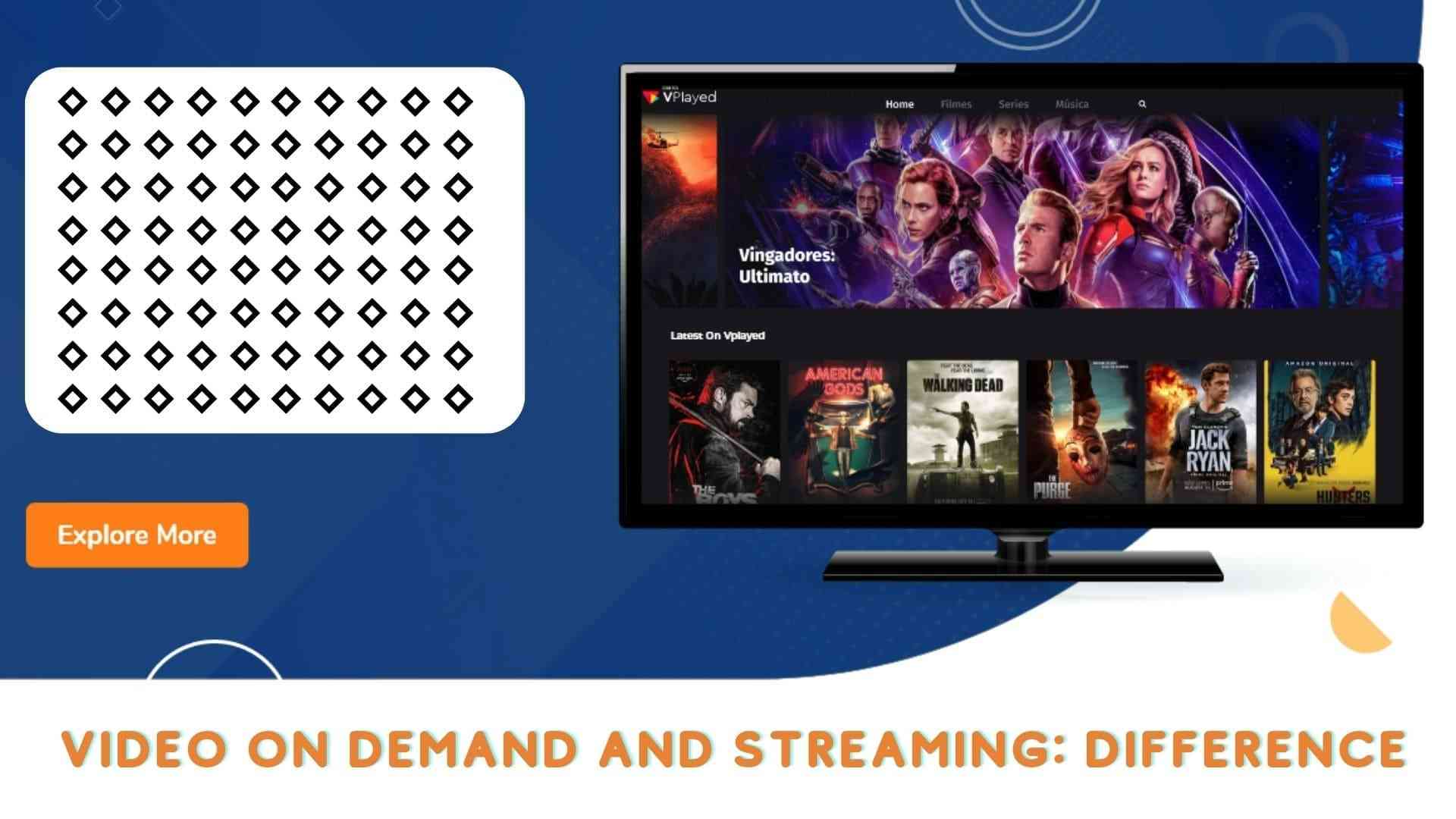Video on Demand streaming has been witnessing a growing demand in recent years. Many have started using VOD platforms to consume content. The flexibility of VOD services in allowing users to watch video content immediately has made it highly sought after. In addition, the global pandemic has also increased its usage across the world.
In this article, we have covered the types of VOD streaming and how it works so that you can understand which VOD streaming platform will be the best choice for your business.
VOD Services – Classification
Subscription video on demand (SVOD)
SVOD model is a video-on-demand service that allows access to users for a recurring fee. Users will be charged depending on what they opt for. Users can access an entire library of videos for the type of subscription they have chosen. Once they subscribe, they can watch as many videos as they prefer across all devices.
The Streaming Of Transactional Video On Demand (Tvod)
So this is a model that allows users to buy video content on pay-per-view. The TVOD model is the opposite of the SVOD model, where you are charged for a video or a package to gain access to an entire library.
Ad-Based Video on Demand (AVOD)
AVOD is an app-based video model available for free to customers, but the revenue is generated by embedding ads in the video. But an AVOD generates lower revenue when compared to the other two models, SVOD and TVOD.
What Is Streaming, And How It Works
Streaming is the way you get to feature your videos via the internet. Streaming allows your customers to watch movies here, podcasts and other TV shows online. This comes with an advantage where users do not have to download large files, which will otherwise consume significant space on their device.
When content is trained via the internet, and a device like a phone or a computer receives the data, your users can start watching the video content you are streaming.
Audio, video, and game streaming are the various types that occupy the streaming platform. The only requirement for streaming is a reliable internet connection, and then you can watch it on any device.
Streaming is done by portioning large-sized content into bite-sized smaller portions for an engaging user experience. Then, these individual bites are sent to a browser.
Then from here, the video player translates the data into a video. The video begins to play as soon as the browser is saturated with sufficient data.
Most streaming platforms stream videos using transmission control, internet, or user datagram protocols. Among all the protocols, the transmission control protocol is the most reliable one to get data correctly and at the right time.
On the other hand, streaming platforms that use user datagram protocol offer quick transfers. Some examples are Netflix, Amazon Prime, and Spotify, which use TCP. In addition, YouTube works with both TCP and UDP.
If you are streaming, you will need servers or cloud platforms to store your content. Market giants like Netflix incorporate content delivery networks.
These network systems store content close to where it will be streamed. This functionality immensely reduces latency and reduces bandwidth costs.
To identify what streaming suits your needs, you need a stable internet connection with stable speed and a minimum of two Mbps to offer a good streaming experience free of downtime and quality issues. Slow connectivity and consistent pauses will occur while the device is buffering. Therefore, stable internet connectivity is crucial to avoid constant buffering. And if you want HD or 4K experience, you need a faster connection, at least 5 Mbps.
Types of Streaming
Live streaming
Live streaming refers to live broadcasts that include one to multiple connections connected to multiple users simultaneously. Some examples are Skype, FaceTime, and Google Hangouts, which offer live streaming and work on real-time communication protocols.
Live streams can be hosted on your VOD platform, where different brands can build their target audience and offer their content.
Live streaming content can be anything from game events, movie premiers, video podcasts, etc.
On-demand Streaming
Like live streaming on demand, streaming can be done live, and then we play on the market. A good example will be a podcast or fitness training which will have the option to accommodate live questionnaires from participants.
On-Demand technology allows viewers to watch movies or TV content at the user’s convenience. With On-Demand, viewers can pause, play, fast-forward, rewind, and re-watch the content whenever and as many times as needed.
A service provider chooses the content for On-Demand viewing and the dates on which they can be viewed.
Most providers control the duration a show is available for the viewers after the initial viewing. For instance, a 12-hour window after the initial viewing restricts viewers from viewing content.
Over-The-Top Ott Streaming
OTT or over The top is a new video content delivery method. Movie and TV content or strained over the internet. In this model.
It offers the benefit of watching video content whenever users want across multiple devices whenever they want. In other words, it is an OTT provider for access to watch video content over the internet.
Differences Between Video on Demand and Streaming
The main differentiation factor between video on demand and live streaming is that live streaming is broadcast in real-time. But VOD can be accessed on demand.
Content Delivery
Live streaming records and produces content in real-time where the infrastructure is complex. Video on demand is pre-recorded content and is available for users to view on demand.
On-demand and live streaming are the two most popular streaming services. But the difference factor is the way content is being watched. On-demand streaming allows viewers access to the content whenever they want. Alternatively, live streaming allows users to watch content as it is broadcast.
On-demand and Live streaming are well-known streaming services. But understanding the difference would help you identify which streaming is the right one for your needs and the needs of your viewers.
On-demand streaming is best for users to watch content at their convenience, while live streaming is suitable if you want your users to watch content being broadcasted in real-time. But it is up to you to determine whether video-on-demand or live streaming is viable, depending on your needs and preferences.
Storage
VOD allows content modification for a better viewing experience. On the other hand, a live stream is an instant and immediate screening of a video.
Live content can be repurposed and streamed as on-demand video content. But a long VOD could be very long, and the best way to do it would be to record and release it in smaller bite-sized portions.
Consumption
VOD service and live stream differ in the way. Content is consumed by the users, Live Streams or appropriate. You will require an on-demand platform if you want to cover broad topics. But it works great when you want to pack a variety of content under a single theme into the On-demand video section.
Video on demand system allows users to select and view video content on multiple devices.
Therefore a breakthrough protocol offered over streaming is a video on demand. It allows users to select from the available videos. The video data is transferred through Real-Time Streaming Protocol.
The Best Examples of VOD Use Cases Would Include:
Movies and entertainment
Corporate training
Podcast
Online educational courses
Video on demand works great for creating videos, archives, and sharing a huge collection of content in the above categories.
Streaming services like Netflix use VOD services. They offer SVOD services. But the need for VOD in the future expands beyond entertainment to education, fitness, live events, and sports.
Conclusion
Users can choose to customize how the video is streaming on their devices. They can customize the video player’s overlays and panels to improve interactivity, and engagement is ideal. VOD platform has tools to build a premium video streaming experience for your target audience.
The increase in consumers transitioning from traditional TV and turning to Video on Demand via OTT apps is the path to the future in the entertainment industry. But as OTT video streaming gets increasingly popular, the ecosystem is overcrowded.
To survive in this highly competitive environment, brands must analyze content consumption and user behaviour patterns to create new strategies and offer innovative products that help in increasing subscribers and enhance customer engagement.
As the VOD market keeps evolving, OTT platforms must include new ways to stay competitive. So the right OTT provider can give you the best user management strategies with flexible monetization models and complete customization that paves the way for a seamless and smooth user experience.





